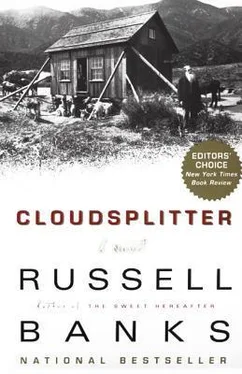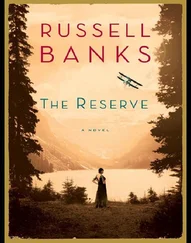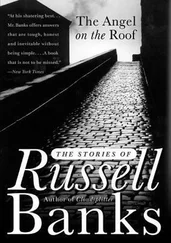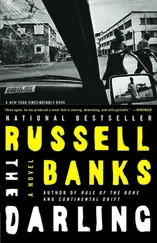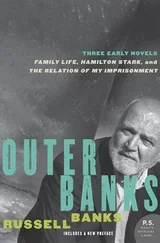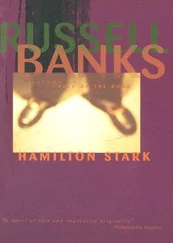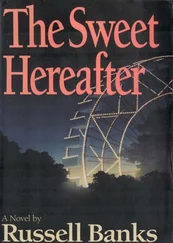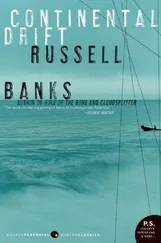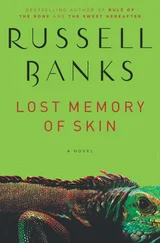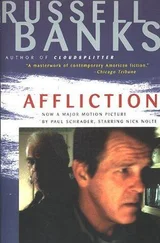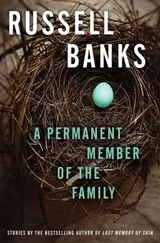“Try it again, if you wish. And hold it there as long as you like.” Again, Father held the ammonia below the girl’s nostrils, this time for perhaps three minutes, while we all watched her face carefully for the slightest sign of discomfort. But it was as if the bottle were filled with fresh spring water.
Professor Sunderland finally reached forward and took the bottle from Father and gently turned Father to face the audience. “Now, my friend, let us see if you do indeed have ammonia here.”
Father closed his eyes and faced squarely ahead. And when the Professor waved the vial under his nose, Father jerked his head back and visibly winced. The audience broke into loud laughter and applause.
“The woman has some ability to hide her reactions to strong smell,” Father said. “Let me try her with the cow-itch.”
“As you wish, sir,” said the hypnotist.
With the corner of his handkerchief, Father applied a swab of the stuff to the girl’s bare neck. She did not flinch or change her expression in the slightest. Father’s shoulders sank.
“Well, my friend, may we test you the same way?” said the hypnotist. “You have the advantage of her, I notice, as a man apparently used to working outdoors in the sun.” He crooked a finger over Father’s collar and drew down his leather tie, exposing to the audience Father’s dark red neck. “May I?” he politely asked, and took the handkerchief from Father’s hand and rubbed it vigorously across the back of Father’s neck.
The Old Man winced, but he did not otherwise reveal the awful pain that I knew he was experiencing and which was growing worse by the instant. Poor man. Along with everyone else in the audience, John was laughing loudly now, as Father struggled to maintain his compo. sure and depart from the stage as swiftly as possible. Practically at a run, he came back up the aisle and, ignoring us as he passed, kept going, straight out the door.
“Should we go with him?” I whispered to John.
“Naw, he’ll befine,”he said, grinning. “In a few days.”
I departed from my seat then and followed the Old Man, feeling too much sympathy to leave him alone. I found him outside on the street, clawing in a frenzy at his collar, struggling to rub the stuff out, but only succeeding in driving it deeper into his flesh. I decided to say nothing and accompanied him all the way home in silence, hanging back a few steps while he stopped at nearly every light pole to rub the back of his neck violently against the cold metal like a poor, stricken beast. It was a pathetic and oddly moving sight, and I was as much fascinated and compelled to stare as I was embarrassed by Father’s antics. I felt ashamed for looking at him. But how I enjoyed seeing Father suffer in public! And how, at the same time, I wished it had not happened at all.
These small stories which I have lately written out for you have drawn me back to the origins of our larger story, to the unknown parts of it, at least. And there is a particular, important book in our life as a family which you may not yet have come upon in your research. Half a century ago, it was very popular amongst the abolitionists. I have this morning retrieved it from the box of Father’s books, which, as you know, remain, along with many of his letters, in my custody, and have been recalling the first time I read in it. The book is called American Slavery as It Is: Testimony of a Thousand Witnesses. I urge you to read aloud the portions of the book which I will copy out here below, so that you will have a more exact idea of how it was for us. We were seated around the fire in the kitchen fireplace of the old Haymaker Place in Hudson, Ohio, where we then lived. Father opened it to the first page and, with his voice very loud, commenced to read from it. After he had read for several moments, he passed the book to us and bade each in turn to read from it.
First, my stepmother Mary read, haltingly and sometimes stumbling over unfamiliar words, for she was not a skillful reader. Then my brother John, who was eighteen years of age that winter, rapidly read a page or two. And after him, Jason, who was seventeen, in a voice that was almost a whisper, took his place. Finally, the book came to me, and I began to read.
We will, in the first place, prove by a cloud of witnesses that the slaves are whipped with such inhuman severity as to lacerate and mangle their flesh in the most shocking manner, leaving permanent scars and ridges. After establishing this, we will present a mass of testimony confirming a great variety of other tortures. The testimony, for the most part, will he that of the slaveholders themselves, and in their own chosen words. A large portion of it will he taken from the advertisements, which they have published in their own newspapers, describing their runaway slaves by the scars on their bodies made by the whip. To copy these advertisements entire would require a great amount of space and flood the reader with a vast mass of matter irrelevant to the point before us; we shall therefore insert only so much of each as will intelligibly set forth the precise point under consideration. In the column following the word “WITNESS” will be found the name of the individual, his place of residence, and the name and date of the paper in which it appeared, and generally the place where it was published. Following the identification of each witness will be an extract from the advertisement containing his or her TESTIMONY….
I stopped and looked up at Father, expecting him to reach forward for the book. But he merely nodded for me to go on, and so I obeyed.
WITNESS: Mr. D. Judd, jailor, Davidson Co., Tenn., in the “Nashville Banner” Dec. 10,1838. TESTIMONY: “Committed to jail as a runaway, a negro woman named Martha, 17 or 18 years of age, has numerous scars of the whip on her back.”
WITNESS: Mr. Robert Nicoll, Dauphin St., between Emmanuel and Conception Sts., Mobile, Ala., in the “Mobile Commercial Advertiser” Oct. 30,1838. TESTIMONY: “Ten dollars reward for my woman Siby, very much scarred about the neck and ears by whipping.”
WITNESS: Mr. Bryant Johnson, Fort Valley, Houston Co., Ga., in the “Standard of Union” Milledgeville, Ga., Oct. 2, 1838. TESTIMONY: “Ranaway, a negro woman named Maria, some scars on her back occasioned by the whip.”
WITNESS: Mr. James T. De Jarnett, Vernon, Autauga Co., Ala., in the “Pensacola Gazette,” July 14,1838. TESTIMONY: “Stolen, a negro woman named Celia. On examining her back you will find marks caused by the whip.”
WITNESS: Maurice Y. Garcia, sheriff of the County of Jefferson, La., in the “New Orleans Bee,” Aug. 14,1838. TESTIMONY: “Lodged in jail, a mulatto boy having large marks of the whip on his shoulders and other parts of his body.”
WITNESS: R. J. Bland, sheriff of Claiborne Co., Miss., in the “Charleston (S.C.) Courier,” Aug. 28,1838. TESTIMONY: “Was committed to jail, a negro boy named Tom; is much marked with the whip.”
WITNESS: Mr. James Noe, Red River Landing, La., in the “Sentinel” Vicksburg, Miss., Aug. 22,1838. TESTIMONY: “Ranaway, a negro fellow named Dick — has many scars on his back from being whipped”
WITNESS: William Craze, jailor, Alexandria, La., in the “Planter’s Intelligencer,” Sept. 21,1838. TESTIMONY: “Committed to jail, a negro slave — his back is very badly scarred.”
Читать дальше
